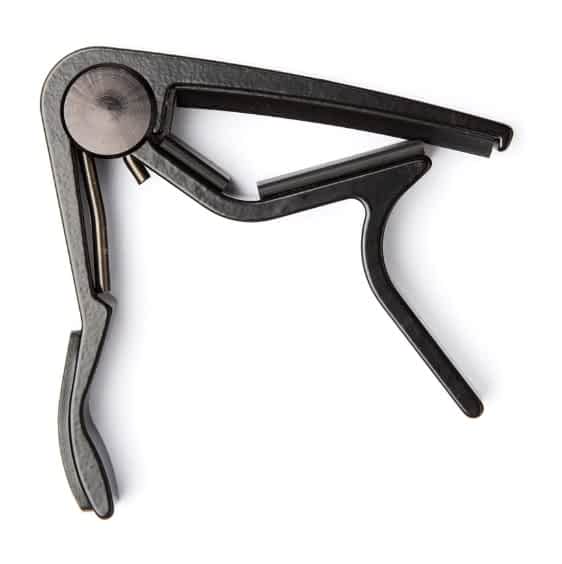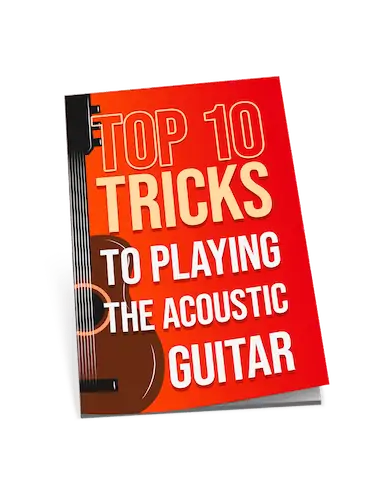Best
OVERALL CAPO FOR CLASSICAL GUITAR
-
Overall: Can Be Used On Both Curved And Flat Fretboards Thanks To Its Dual Radius Design
-
Best Feature: Secure clamping for 6 or 12 string guitars
-
TedScore™: 9/10
Best
SPRING CAPO FOR CLASSICAL GUITAR
-
Overall: Quickly And Easily Releases And Repositions With One Hand Without Disturbing Tuning
-
Best Feature: Holds Down 3 Strings On A 6 String Guitar
-
TedScore™: 9/10
Best
MICROMETER CAPO FOR CLASSICAL GUITAR
-
Overall: Clamp Effortlessly To Your Guitar Neck Without Causing Any Damage
-
Best Feature: Has Soft Rubber Material To Ensure Your Strings Stay Firmly In Tune
-
TedScore™: 9/10
Are you struggling with those high notes, or do you want to explore new sounds on your guitar? I’ve got just the thing for you! Learning how to use a capo can transform your playing experience and open up a world of musical possibilities.
A capo is like a secret weapon for guitarists. By clamping it onto different frets, you can easily change the key of your songs without learning new fingerings.
This nifty tool can help you play songs that would otherwise be too difficult, and it brings a fresh vibe to your music.
Keep reading, and I’ll show you how to use a capo to its full potential. Trust me, once you get the hang of it, you’ll wonder how you ever played without one!
What is a Capo?
A capo is a small device that can change the pitch and key of your guitar without re-tuning it. It works by clamping onto the strings at a specific fret, effectively shortening the strings’ length and raising the notes’ pitch. Doing this changes the pitch and key of the whole guitar.
This means that the same chord progression and shapes you learned can still be used higher up on the fretboard. The chords played will differ, but the chord progressions you have learned will still sound good. This allows you to play in different keys and positions on the fretboard and can make certain chords and songs easier to play.

What Guitar Uses a Capo?
A capo can be used on any type of guitar, whether acoustic, electric, or classical. It’s a versatile accessory used by guitarists of all skill levels and musical styles. Whether you’re playing folk, country, rock, or any other genre, a capo can help you achieve the sound and feel you want.
Why Should You Use a Capo for Playing the Guitar?
With a capo, you can play any chord shape and those same chords in any fret position along the neck of the guitar. This handy tool offers other benefits, including making it easier when playing songs and certain chords, allowing you to play in different keys without learning new chord shapes, and creating a brighter, more vibrant sound.
Additionally, a capo can help you achieve a more consistent tone across different frets and can even help to prolong the life of your strings by reducing the tension on them.
Steps on How to Use a Capo for Playing Guitar Correctly
If you’re new to playing guitar, using a capo can seem intimidating. But don’t worry! Here are some steps to help you operate a capo correctly:
Step 1: Choose the right capo for your guitar. Different types of capos are available, such as spring-loaded, strap-on, and screw-on. Make sure you choose one that fits your guitar properly and is easy to use.
Step 2: Decide where to place the capo on the fretboard. The capo will change the key of your guitar, so choose a fret that corresponds to the key you want to play in.
Step 3: Position the capo on the fretboard. Ensure the capo is centred on the fret and press down on all the strings evenly.
Step 4: Test the capo. Play a few chords to ensure the capo is holding down the strings tightly enough and that there are no buzzing or muted notes.
Step 5: Adjust the capo if necessary. If you hear buzzing or muted notes, try repositioning the capo or pressing the strings more firmly.
With these steps, you can confidently use a capo and take your guitar playing to the next level.
Common Mistakes to Avoid When Using a Guitar Capo
There are some common mistakes beginner guitarists and even experienced players can make when using a capo. Let’s get through them one by one.
Mistake #1: Placing the capo too close to the fret or too far away can cause your guitar to go out of tune. Place the capo just behind the desired fret for the best sound.
Mistake #2: Applying too much pressure with the index finger to the capo can cause the strings to go sharp, resulting in an unpleasant sound. Apply enough pressure to hold down the strings, but not too much that it causes them to go sharp.
Mistake #3: Using the wrong type of capo. With different types of capos available, choose the right kind for your guitar and playing style.
Mistake #4: Not removing the capo on your guitar when not used. This can cause unnecessary wear and tear on your strings and affect the tone of your guitar.
How to Choose The Perfect Guitar Capos
When it comes to choosing the perfect guitar capo, here are a few important things to consider:
Material
Capos can be made from various materials, such as plastic, metal, and rubber. Metal capos are the most durable, while rubber capos are the most affordable. Plastic capos are lightweight and easy to use.
Size
Capos come in different sizes to fit different neck widths. Choose a capo that properly fits your guitar’s neck to prevent buzzing or intonation issues.
Spring strength
The spring strength of a capo determines how tightly it clamps onto the strings. A capo with a strong spring is ideal for thicker strings, while a weaker clamp spring is better for lighter strings.
Padding
The padding on a capo helps to protect your guitar’s neck from scratches and damage. Look for a capo with soft padding that won’t leave marks on your guitar.
Ultimately, the best way to choose a capo is to try different models and see which one feels the most comfortable and produces the best sound on your guitar. Don’t be afraid to experiment until you find the perfect capo for you.
Recommended Guitar Capos
Many guitar capos are available on the market, but here are some of our top recommendations for their durability, ease of use, and ability to provide consistent, high-quality sound.

PERFECT FOR: steel string guitars
FEATURES: With a classy finish that will look fantastic with practically any guitar finish
OTHER INFO: Has a user-friendly design for seamless performance
Shubb C1 Steel String Guitar Capo, Polished Nickel
When you check the price above, you’ll see there are loads of great places to buy this item. Our personal favorite is Gear4music.
It is the largest music retailer in the UK and fast becoming the most respected online music shop in the US too. Their customer service is excellent, they have competitive prices, really fast shipping, and usually have the longest guarantee.
Most professional musicians use Gear4music, so there is no reason why you shouldn’t too!
- The ideal companion for musical exploration
- With superb Shubb quality for a performance that glides effortlessly
- More costly than competing brands
The professional musician who wrote this article combined many things,
from the product build, manufacturer’s reputation through to feedback
from other users, to create our famous TedScore™.

PERFECT FOR: performing guitarists
FEATURES: Has a lightweight and modern design
OTHER INFO: A partial capo that holds down three out of six strings
G7th Newport Partial Capo 3-String, Silver
When you check the price above, you’ll see there are loads of great places to buy this item. Our personal favorite is Gear4music.
It is the largest music retailer in the UK and fast becoming the most respected online music shop in the US too. Their customer service is excellent, they have competitive prices, really fast shipping, and usually have the longest guarantee.
Most professional musicians use Gear4music, so there is no reason why you shouldn’t too!
- Comes with an adjustable screw to control guitar neck tension
- Great for easy performances
- Excellent for musicians who need to make quick adjustments on stage
- Higher price point compared to other counterparts
The professional musician who wrote this article combined many things,
from the product build, manufacturer’s reputation through to feedback
from other users, to create our famous TedScore™.

PERFECT FOR: 6 or 12-string acoustic guitars
FEATURES: Boasts outstanding durability with its aircraft-quality aluminium
OTHER INFO: Comes with padding to ensure your guitar's safety
Dunlop 83CB Trigger Capo, Acoustic Curved, Black
When you check the price above, you’ll see there are loads of great places to buy this item. Our personal favorite is Gear4music.
It is the largest music retailer in the UK and fast becoming the most respected online music shop in the US too. Their customer service is excellent, they have competitive prices, really fast shipping, and usually have the longest guarantee.
Most professional musicians use Gear4music, so there is no reason why you shouldn’t too!
- Provides secure clamping
- Super easy to use thanks to smooth spring-action
- A little more pricey compared to other brands
The professional musician who wrote this article combined many things,
from the product build, manufacturer’s reputation through to feedback
from other users, to create our famous TedScore™.
How To Use A Capo For Guitar
Summary
Using a capo is like unlocking a new world on the guitar. It opens up countless possibilities for both beginners and experienced players.
Here are some key takeaways from our discussion:
- Quickly Change Keys: Move your capo up or down the neck to suit your vocal range or match the original song key effortlessly.
- Easier Chord Shapes: Simplify challenging chord progressions by shifting them into areas of the neck with easier finger positions.
- Enhanced Sound: A capo can shorten the strings’ vibrating length, giving your guitar a brighter, crisper sound.
Remember, practice is key. The more you experiment with your capo, the more you’ll discover its benefits. Keep it fun and creative!
And if you’re looking for more advice on buying a capo – then check out our Best Guitar Capo article here.
FAQ's
A capo changes the guitar’s key by raising the pitch of your open position notes. The key that a capo changes the guitar to depends on the fret where the capo is placed. For example, if you place the capo on the 2nd fret, the key will be raised by a whole step.
You use a capo to change the guitar’s key without changing the tuning. It’s also used to make chords easier to play, play in different neck positions, and create a brighter sound with open chords.
Using a capo can make playing guitar easier in some situations, such as playing in different keys without learning new chord shapes. However, it does not necessarily make playing the guitar easier overall, as it depends on the specific situation and the player’s skill level.












Interesting point about spring strength. Never really thought about it affecting the ease of use. I guess that’s why my current capo feels like a workout to apply. Might be time for a change.
While I appreciate the comprehensive coverage on capos, I can’t help but point out that certain genres, jazz in particular, rarely if ever utilize capos. This reliance on capos in other genres might highlight a broader issue with musical training where the foundational skill of transposition is being overlooked. By depending too heavily on a capo, are we not potentially limiting our musical palette and hampering our ability to modulate freely?
You do make a compelling argument about artistic choice. Perhaps my concern is more with those who view the capo as a crutch rather than another tool in their musical arsenal.
I see your point, but isn’t it also true that capos allow guitarists to explore different voicings and sonic textures that would be otherwise unachievable? It’s less about reliance and more about the artistic choice in the context of the piece being played.
Interesting read, Hugh Richardson. I’ve always just used whatever capo was at hand, never thought much about the difference materials or sizes could make. Might look into getting a better one now.
Just wanna say a big ol’ thank you to Hugh Richardson for explaining how to correctly use a capo. Made a huge difference to my playing, especially when I’m trying to nail those classic country tunes that need a capo to sound just right. Never knew positioning it too far from the fret could make such a big difference. Cheers!
haha, so true about those common mistakes. been there, done that with the buzzing strings nightmare. learned my lesson to check the position more carefully. btw, any tips on keeping capos from getting lost? i swear they grow legs and walk away.
Get a capo with a clip or strap, or even attach a small lanyard to it. Clips onto the guitar bag or strap easily so you won’t lose it.
Mine must be on vacation with yours, can never find them when I need them!
Regarding the section on choosing the perfect guitar capo, I believe more emphasis should be placed not only on the material and pad, but also on the mechanism of action and how it affects tone sustain. In my experience, a poorly designed capo can significantly dampen the vibrancy of the strings, leading to a muted sound. Perhaps a future update of this article could explore the nuances of capo design further, comparing the effects on sound quality between various capo types. It’s a complex topic that deserves a deeper dive.
Totally agree with you on the importance of the capo design. Had a few bad experiences with cheaper capos. Now I’m curious about trying different types to see how each affects the sound.
never really understood why some ppl make a big deal about capo materials until I got a cheap plastic one and it broke mid-song lol. metal ones from now on for me
hey, can anyone explain why some capos are curved and some are straight? do they work differently on acoustic vs electric guitars or what’s the deal lol. still figuring out all this guitar stuff and this article made me wonder.
Absolutely appreciated this detailed guide, especially the part on choosing the right capo. It’s an area many overlook but so crucial. Kudos,
Hugh Richardson.
Hey, I’m new to playing the guitar and found your section on choosing the perfect capo really handy. How crucial is the spring strength in a capo’s performance? I’m a bit lost on whether I should go for a stronger spring for a more secure grip or if it makes it harder to move around. Thanks for the insights!
Hey, strong springs are great for acoustic guitars with thicker strings, but for electrics, you can go lighter. Don’t stress too much, you’ll find what works best with some trial and error.